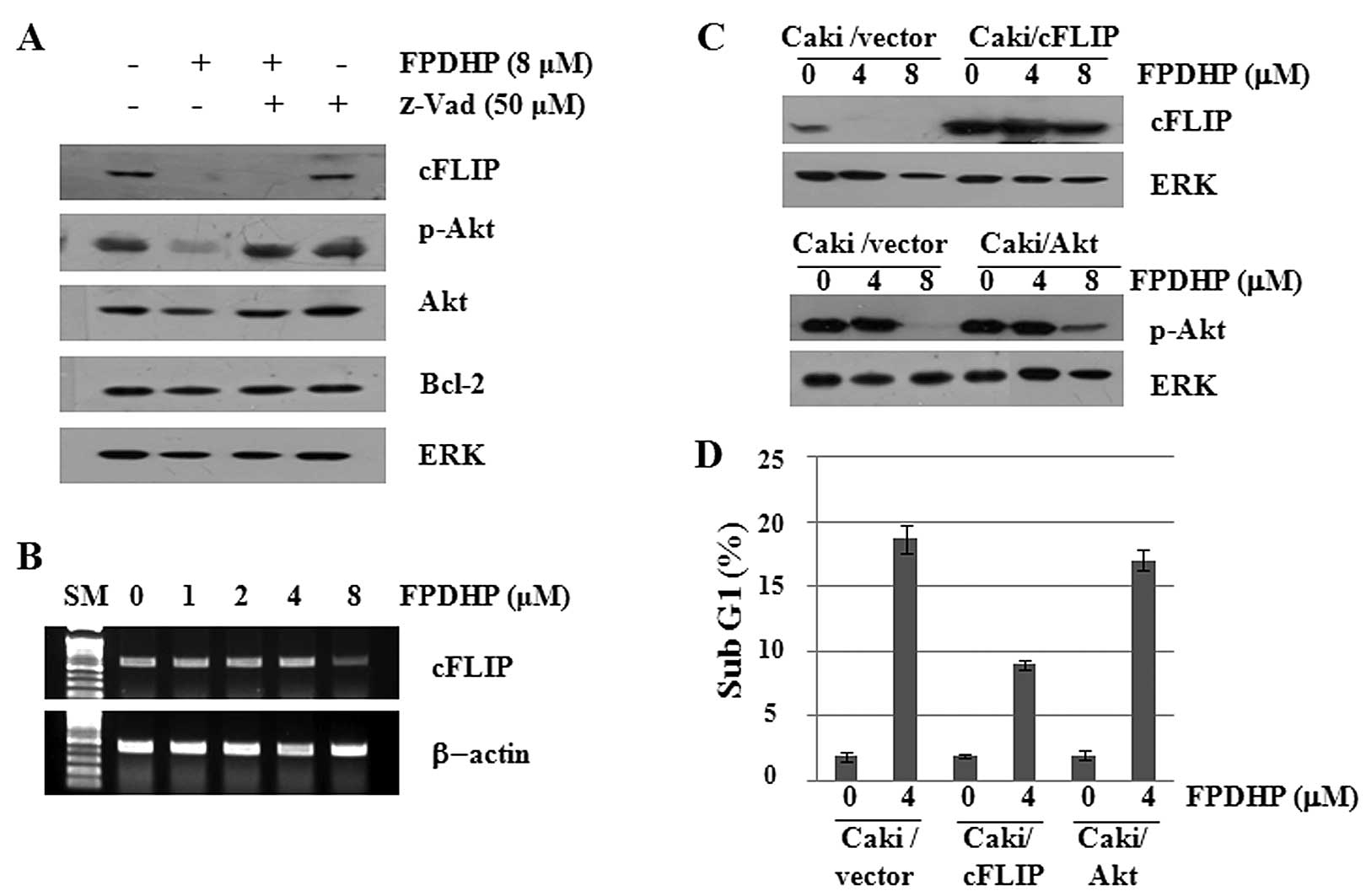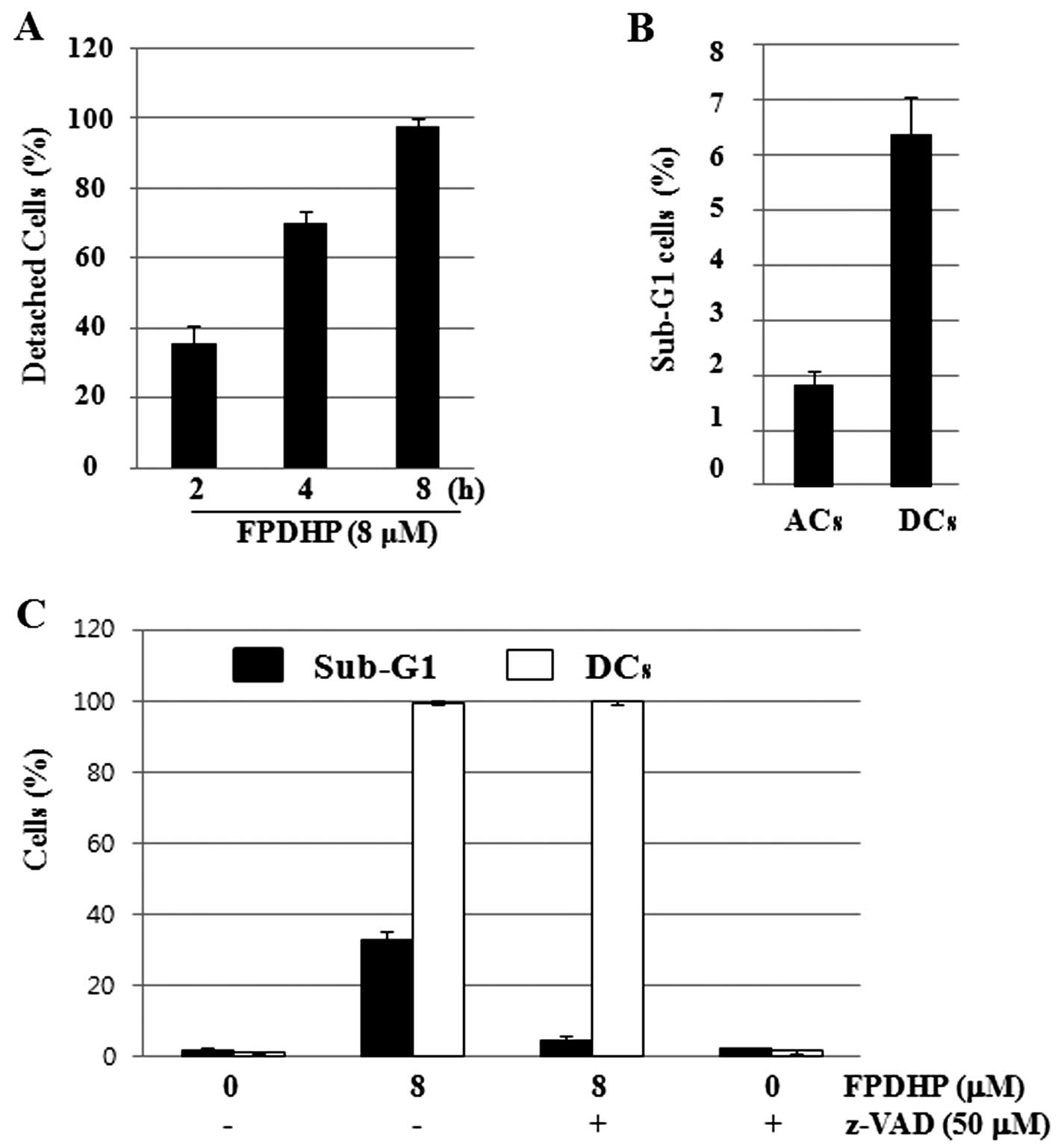|
1
|
Pommier Y: DNA topoisomerase I inhibitors:
chemistry, biology, and interfacial inhibition. Chem Rev.
109:2894–2902. 2009. View Article : Google Scholar : PubMed/NCBI
|
|
2
|
Wang JC: DNA topoisomerases. Annu Rev
Biochem. 65:635–692. 1996. View Article : Google Scholar
|
|
3
|
Nitiss JL: Investigating the biological
functions of DNA topoisomerases in eukaryotic cells. Biochim
Biophys Acta. 1400:63–81. 1998. View Article : Google Scholar : PubMed/NCBI
|
|
4
|
Kellner U, Rudolph P, Parwaresch R, et al:
Human DNA-topoisomerases - diagnostic and therapeuticimplications
for cancer. Onkologie. 23:424–430. 2000. View Article : Google Scholar : PubMed/NCBI
|
|
5
|
Singh SK, Ruchelman AL, Li TK, et al:
Nitro and amino substitution in the D-ring of
5-(2-dimethylaminoethyl)-2,3-methylenedioxy-5H-dibenzo[c,h)[1,6)naphthyridin-6-ones:
effect on topoisomerase-I targeting activity and cytotoxicity. J
Med Chem. 46:2254–2257. 2003.PubMed/NCBI
|
|
6
|
Forterre P, Gribaldo S, Gadelle D and
Serre MC: Origin and evolution of DNA topoisomerases. Biochimie.
89:427–446. 2007. View Article : Google Scholar : PubMed/NCBI
|
|
7
|
Bailly C: Contemporary challenges in the
design of topoisomerase II inhibitors for cancer chemotherapy. Chem
Rev. 112:3611–3640. 2012. View Article : Google Scholar : PubMed/NCBI
|
|
8
|
Jeong BS, Choi H, Kwak YS and Lee ES:
Synthesis of 2,4,6-tripyridyl pyridines, and evaluation of their
antitumor cytotoxicity, topoisomerase I and II inhibitory activity,
and structure-activity relationship. Bull Korean Chem Soc.
32:3566–3570. 2011. View Article : Google Scholar
|
|
9
|
Thapa U, Thapa P, Karki R, et al:
Synthesis of 2,4-diaryl chromenopyridines and evaluation of their
topoisomerase I and II inhibitory activity, cytotoxicity, and
structure-activity relationship. Eur J Med Chem. 46:3201–3209.
2011. View Article : Google Scholar : PubMed/NCBI
|
|
10
|
Thapa P, Karki R, Yoo HY, et al:
2,4-Diaryl-5,6-dihydro-1,10-phenanthroline and
2,4-diaryl-5,6-dihydrothieno[2,3-h) quinoline derivatives for
topoisomerase I and II inhibitory activity, cytotoxicity, and
structure-activity relationship study. Bioorg Chem. 40:67–78.
2012.PubMed/NCBI
|
|
11
|
Lee SH, Van HT, Yang SH, et al: Molecular
design, synthesis and docking study of benz[b)oxepines and
12-oxobenzo[c)phenanthridinones as topoisomerase 1
inhibitors. Bioorg Med Chem Lett. 19:2444–2447. 2009.PubMed/NCBI
|
|
12
|
Thapa P and Lee ES:
2,4-Diaryl-5,6-dihydro-1,10-phenanthrolines with furyl or thienyl
moiety at 4-position: synthesis, topoisomerase I and II inhibitory
activity, and cytotoxicity. Bull Korean Chem Soc. 33:1769–1772.
2012. View Article : Google Scholar
|
|
13
|
Long JS and Ryan KM: New frontiers in
promoting tumour cell death: targeting apoptosis, necroptosis and
autophagy. Oncogene. 31:5045–5060. 2012. View Article : Google Scholar : PubMed/NCBI
|
|
14
|
Yu X, Deng Q, Bode AM, et al: The role of
necroptosis, an alternative form of cell death, in cancer therapy.
Expert Rev Anticancer Ther. 13:883–893. 2013. View Article : Google Scholar : PubMed/NCBI
|
|
15
|
Reyjal J, Cormier K and Turcotte S:
Autophagy and cell death to target cancer cells: exploiting
synthetic lethality as cancer therapies. Adv Exp Med Biol.
772:167–188. 2014. View Article : Google Scholar : PubMed/NCBI
|
|
16
|
Mashima T and Tsuruo T: Defects of the
apoptotic pathway as therapeutic target against cancer. Drug Resist
Updat. 8:339–343. 2005. View Article : Google Scholar : PubMed/NCBI
|
|
17
|
Rodriguez-Nieto S and Zhivotovsky B: Role
of alterations in the apoptotic machinery in sensitivity of cancer
cells to treatment. Curr Pharm Des. 12:4411–4425. 2006. View Article : Google Scholar : PubMed/NCBI
|
|
18
|
Ocker M and Höpfner M:
Apoptosis-modulating drugs for improved cancer therapy. Eur Surg
Res. 48:111–120. 2012. View Article : Google Scholar : PubMed/NCBI
|
|
19
|
Emoto Y, Manome Y, Meinhardt G, et al:
Proteolytic activation of protein kinase C delta by an ICE-like
protease in apoptotic cells. EMBO J. 14:6148–6156. 1995.PubMed/NCBI
|
|
20
|
Porter AG and Jänicke RU: Emerging roles
of caspase-3 in apoptosis. Cell Death Differ. 6:99–104. 1999.
View Article : Google Scholar : PubMed/NCBI
|
|
21
|
Micheau O: Cellular FLICE-inhibitory
protein: an attractive therapeutic target? Expert Opin Ther
Targets. 7:559–573. 2003. View Article : Google Scholar : PubMed/NCBI
|
|
22
|
Li X, Pan X, Zhang H, et al:
Overexpression of cFLIP in head and neck squamous cell carcinoma
and its clinicopathologic correlations. J Cancer Res Clin Oncol.
134:609–615. 2008. View Article : Google Scholar : PubMed/NCBI
|
|
23
|
Chiarugi P and Giannoni E: Anoikis: a
necessary death program for anchorage-dependent cells. Biochem
Pharmacol. 76:1352–1364. 2008. View Article : Google Scholar : PubMed/NCBI
|
|
24
|
Simpson CD, Anyiwe K and Schimmer AD:
Anoikis resistance and tumor metastasis. Cancer Lett. 272:177–185.
2008. View Article : Google Scholar : PubMed/NCBI
|













